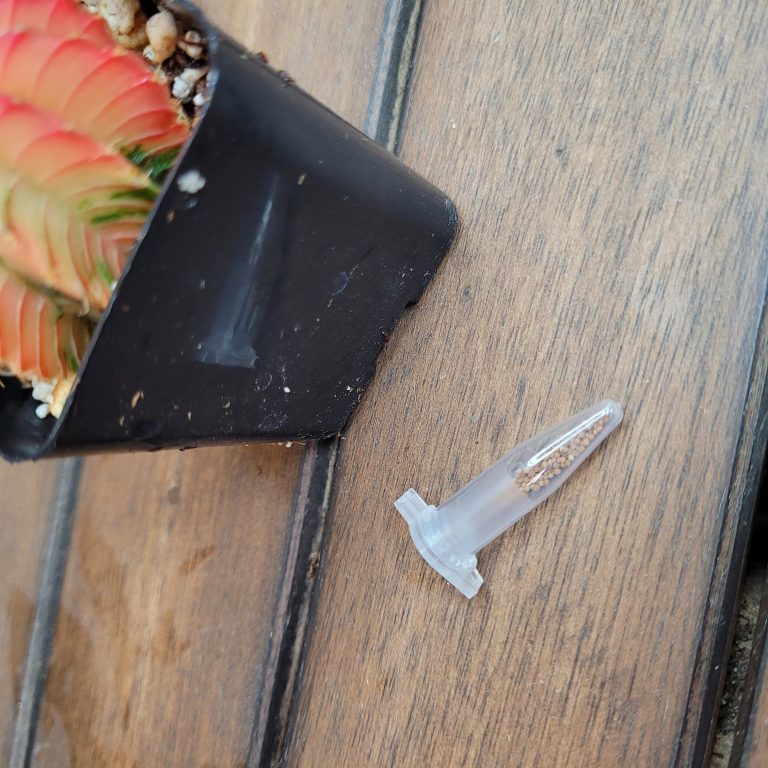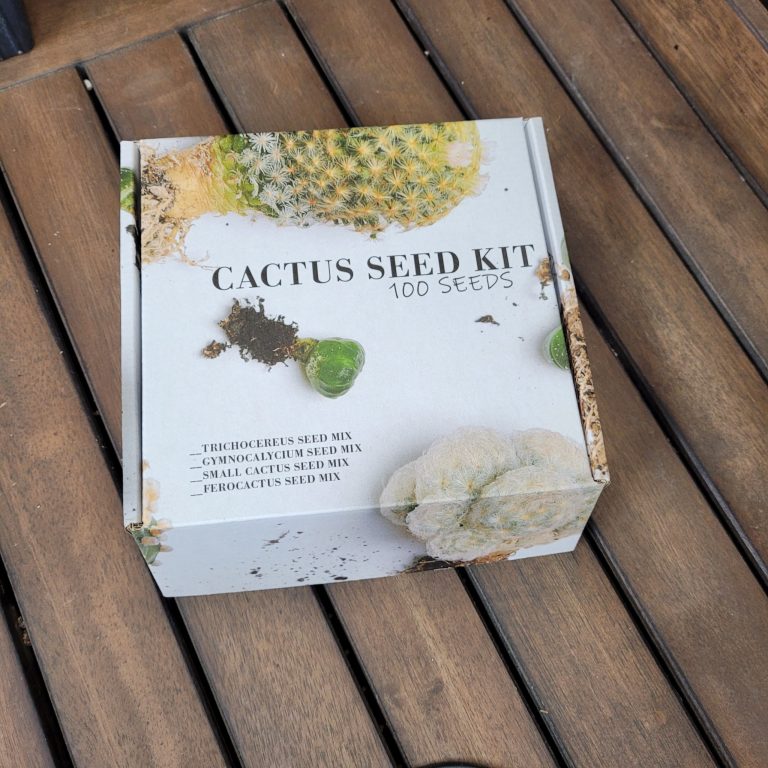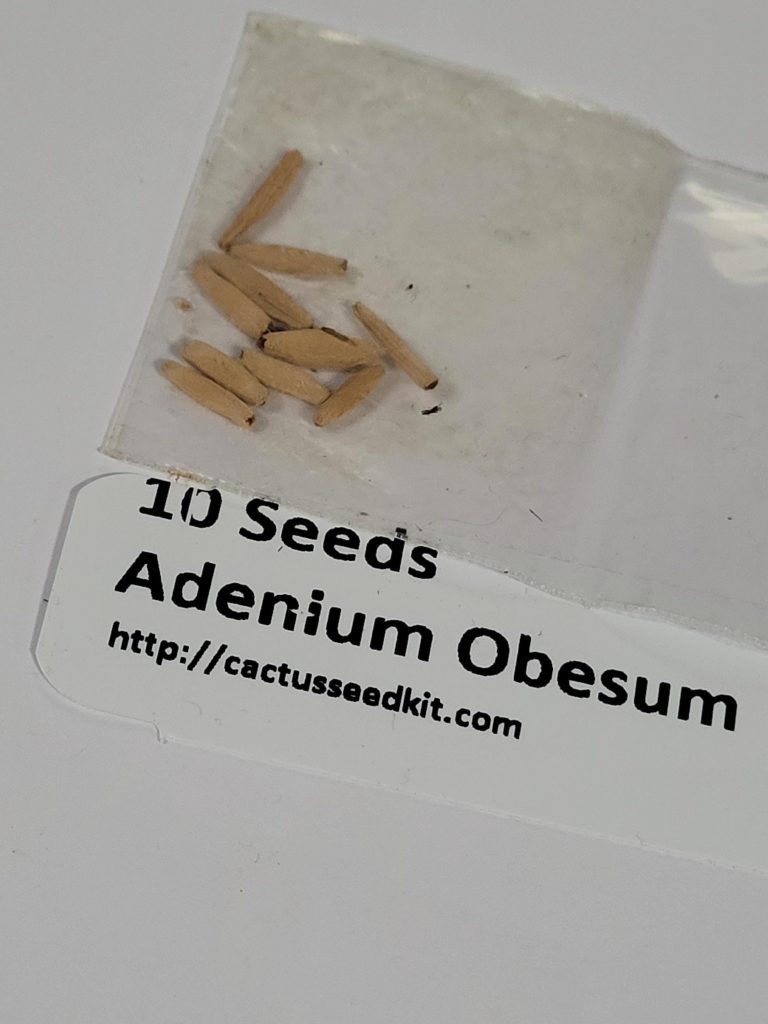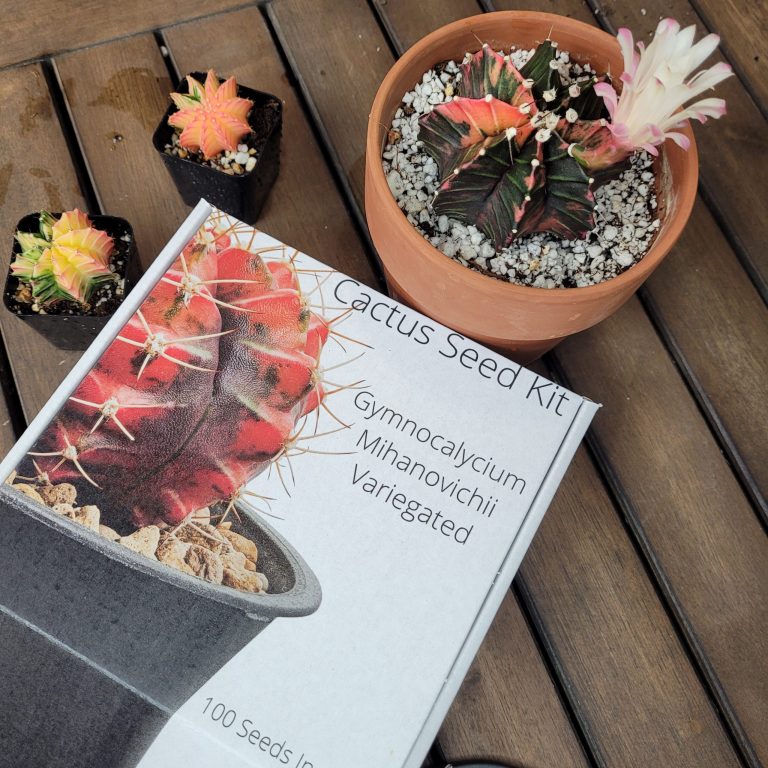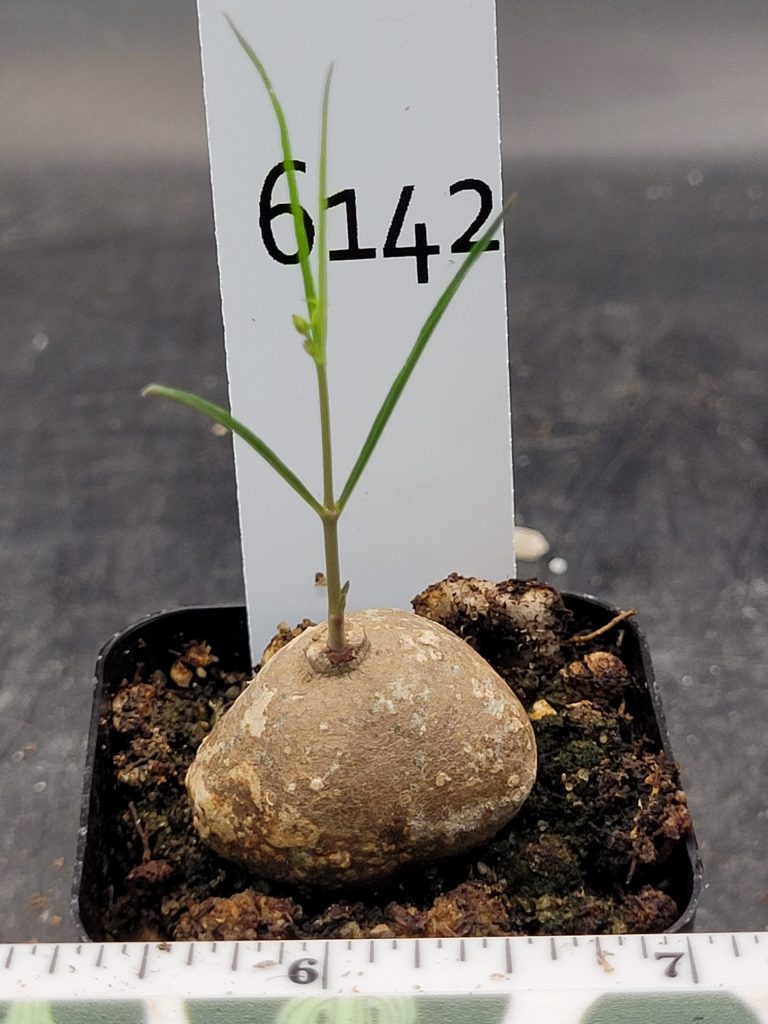Dorstenia horwoodii, a rare and intriguing member of the Moraceae family, is a unique succulent prized for its unusual, star-shaped flowers and compact growth habit. Growing Dorstenia horwoodii from seed can be a rewarding challenge, offering a chance to nurture this rare plant from its earliest stages. This guide will walk you through the process of planting, caring for, and acclimating your Dorstenia horwoodii seedlings.
Step 1: Gather Your Supplies
Before you begin, ensure you have the following materials:
- Dorstenia horwoodii seeds: Purchase fresh seeds from a reputable source to improve germination success.
- Seed trays or small pots: Use shallow containers with drainage holes.
- Well-draining soil mix: A cactus or succulent mix is ideal, or create your own mix using equal parts of coarse sand, perlite, and potting soil.
- Plastic wrap or clear plastic lids: To maintain humidity during germination.
- Watering can or spray bottle: For gentle watering.
- Labels: To track planting dates and other relevant details.
Step 2: Prepare the Soil
Dorstenia horwoodii thrives in a well-draining soil mix to prevent root rot. Prepare the soil by mixing equal parts of coarse sand, perlite, and potting soil. Fill your seed trays or small pots with this mix, leaving about 1/2 inch (1.3 cm) of space at the top.
Step 3: Plant the Seeds
- Moisten the soil: Lightly water the soil in the seed trays or pots before planting. The soil should be damp but not overly wet.
- Sow the seeds: Place the Dorstenia horwoodii seeds on the surface of the soil, spacing them about 1 inch (2.5 cm) apart. Gently press the seeds into the soil without fully burying them, as they need light to germinate.
- Create a humid environment: Cover the seed trays or pots with plastic wrap or a clear plastic lid to retain moisture and create a greenhouse-like environment.
- Label the containers: Record the planting date and any other pertinent information on a label, and place it in the tray or pot.
Step 4: Germination and Early Care
- Temperature and light: Place the seed trays or pots in a warm location with bright, indirect light. The ideal temperature for germination is between 75-85°F (24-29°C).
- Monitor moisture: Keep the soil consistently moist, but avoid waterlogging. Mist the soil lightly with water as needed to maintain the right moisture level.
- Germination time: Dorstenia horwoodii seeds typically germinate within 2-4 weeks. However, patience is key, as some seeds may take longer to sprout.
Step 5: Caring for Seedlings
Once your Dorstenia horwoodii seeds have germinated, follow these steps to care for the young seedlings:
- Gradually reduce humidity: As the seedlings develop their first true leaves, start to gradually remove the plastic cover over several days to help them adjust to normal humidity levels.
- Light: Move the seedlings to a bright location with plenty of indirect sunlight. If natural light is insufficient, consider using a grow light to provide 12-14 hours of light per day.
- Watering: Allow the soil to dry slightly between waterings. Water deeply but infrequently to encourage strong root development. Overwatering can lead to root rot, so be cautious.
- Fertilization: Once the seedlings are a few inches tall, you can begin fertilizing them with a diluted, balanced fertilizer every 4-6 weeks during the growing season (spring and summer).
Step 6: Acclimating and Transplanting
- Transplanting: When the seedlings reach about 2-3 inches (5-7.5 cm) tall and have a well-established root system, transplant them into individual pots. Use a well-draining succulent mix, and ensure the pots have drainage holes.
- Sunlight: Dorstenia horwoodii prefers bright, indirect light. Avoid direct sunlight, which can scorch the leaves. Gradually acclimate the seedlings to brighter light conditions after transplanting.
- Watering: Continue to water deeply but allow the soil to dry out between waterings. During the winter, when the plant may enter dormancy, reduce watering significantly.
- Pests and diseases: Monitor for common pests such as spider mites, mealybugs, and aphids. Treat any infestations promptly with insecticidal soap or neem oil. Ensure good air circulation to prevent fungal issues.
Conclusion
Growing Dorstenia horwoodii from seed is a gratifying process, offering the opportunity to cultivate a rare and fascinating succulent from the ground up. By following these steps, you can successfully plant, care for, and acclimate your seedlings, ensuring they thrive and develop into mature, healthy plants. With time and attention, your Dorstenia horwoodii will become a unique and cherished addition to your collection. Happy growing!

